iPhone 6 and iPhone 6 Plus: Preliminary Results
by Joshua Ho on September 22, 2014 7:07 AM EST- Posted in
- Smartphones
- Apple
- Mobile
- iOS
- iPhone 6
- iPhone 6 Plus
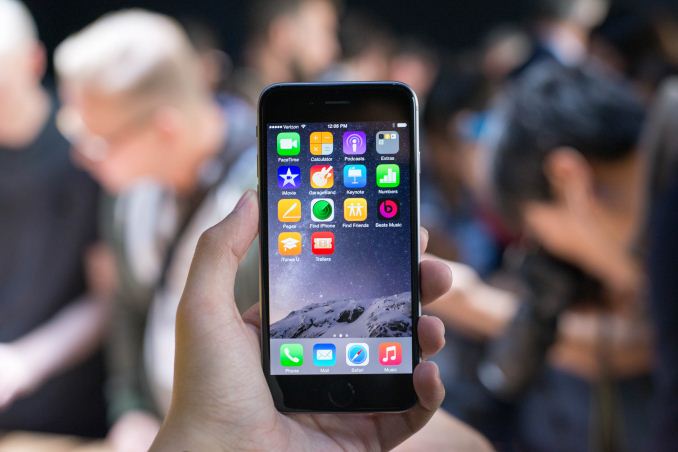
While we’re still working on the full review, I want to get out some preliminary results for the iPhone 6. For now, this means some basic performance data and battery life, which include browser benchmarks, game-type benchmarks, and our standard web browsing battery life test. There’s definitely a lot more to talk about for this phone, but this should give an idea of what to expect in the full review. To start, we'll look at the browser benchmarks, which can serve as a relatively useful proxy for CPU performance.
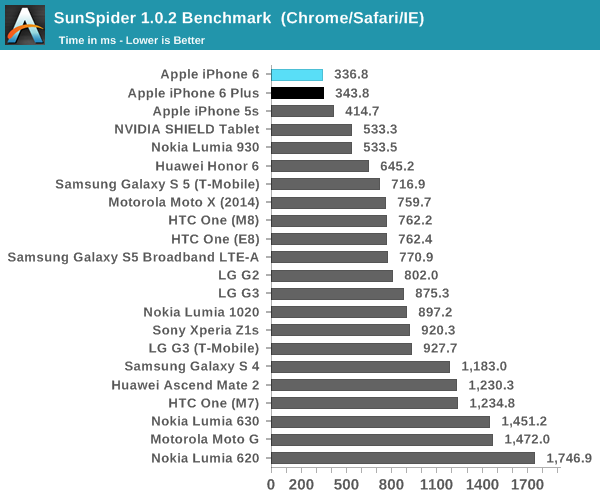
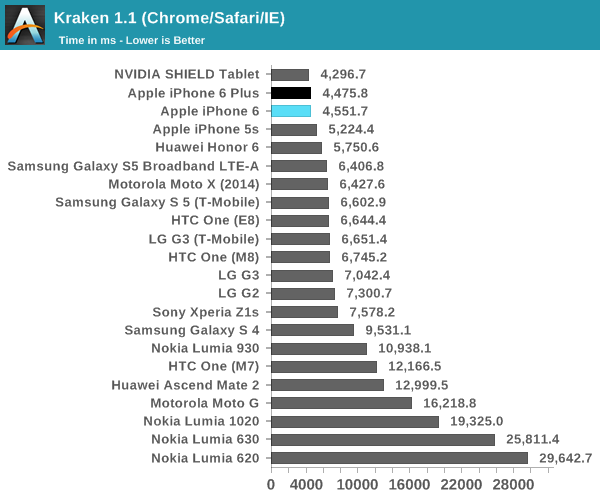
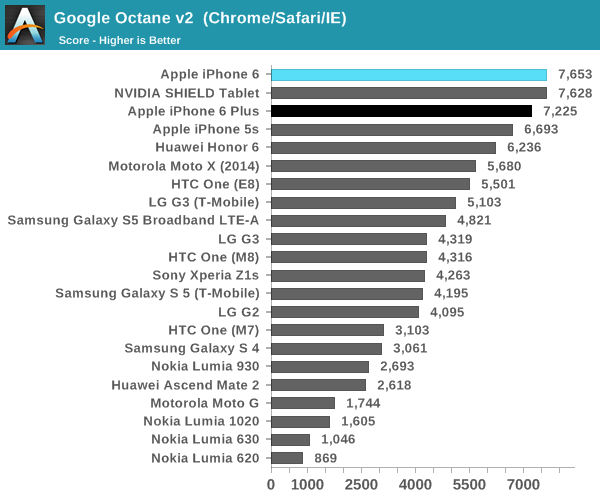
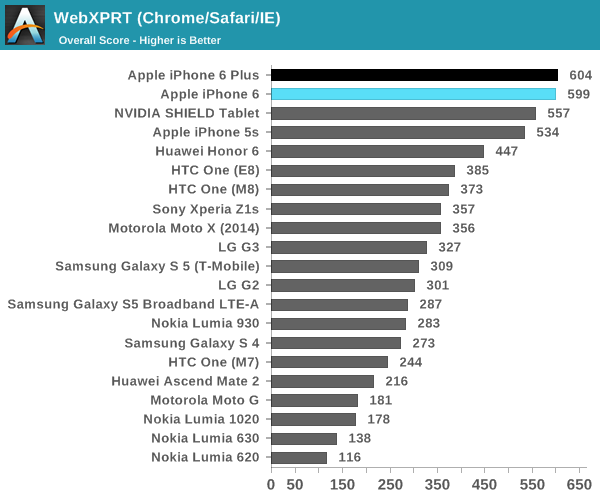
There are a few interesting observations here, as a great deal of the scaling is above what one would expect from the minor frequency bump when comparing A7 and A8. In SunSpider, we see about a 13% increase in performance that can't be explained by frequency increases alone. For Kraken, this change is around 7.5%, and we see a similar trend across the board for the rest of these tests. This points towards a relatively similar underlying architecture, although it's still too early to tell how much changes between the A7 and A8 CPU architectures. Next, we'll look at GPU performance in 3DMark and GFXBench, although we're still working on figuring out the exact GPU in A8.
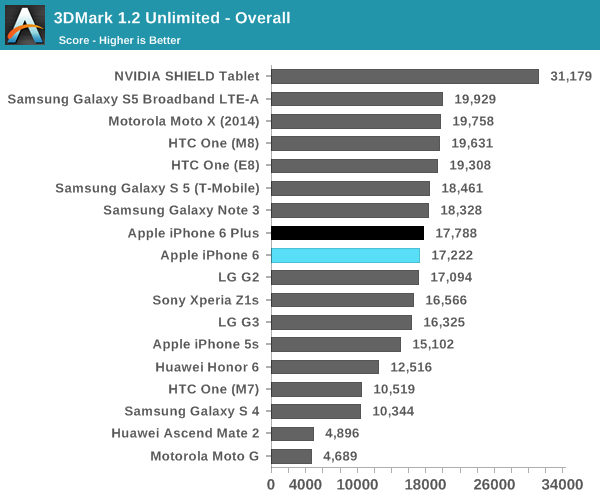
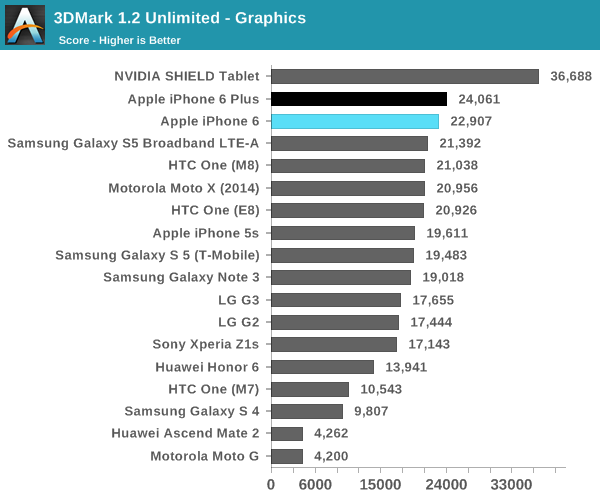
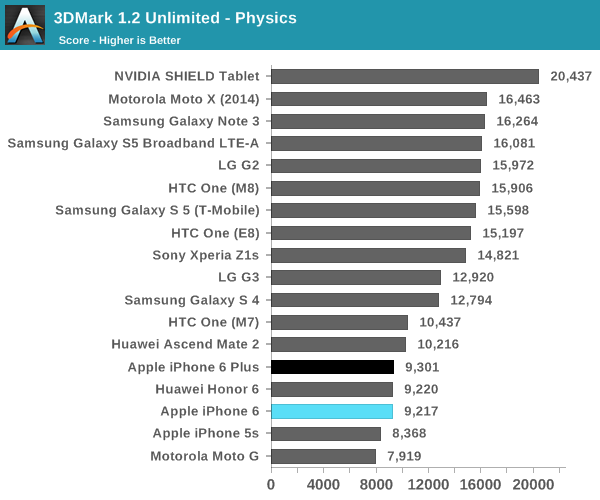
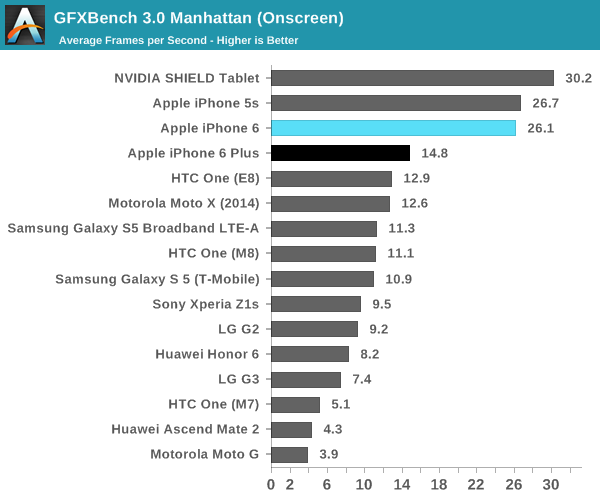
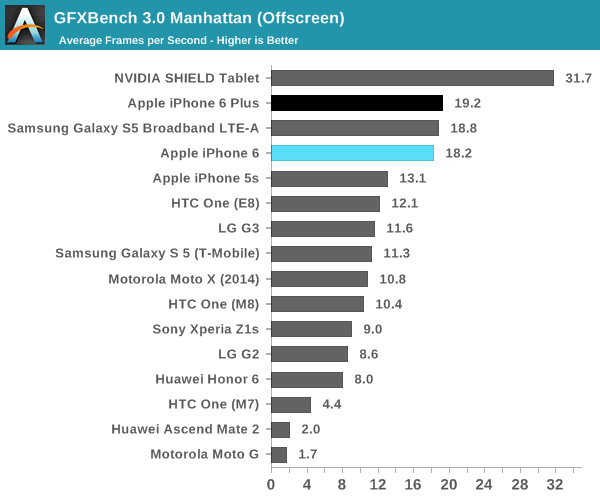
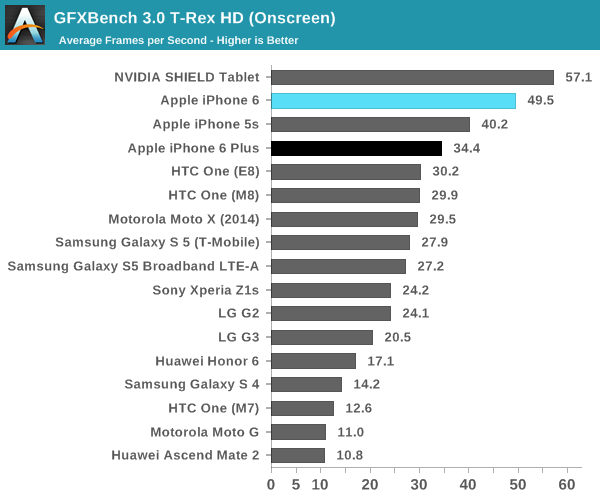
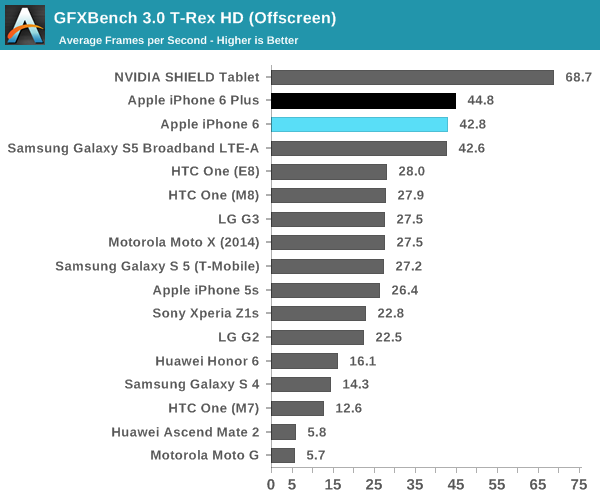
In in GPU benchmarks, we generally see a pretty solid lead over the competition for the iPhone 6/A8. It's seems quite clear that there is a significant impact to GPU performance in the iPhone 6 Plus due to the 2208x1242 resolution that all content is rendered at. It seems that this is necessary though, as the rendering system for iOS cannot easily adapt to arbitrary resolutions and display sizes. Before we wrap up this article though, I definitely need to address battery life. As with all of our battery life tests, we standardize on 200 nits and ensure that our workload in the web browsing test has a reasonable amount of time in all power states of an SoC.

As one can see, it seems that Apple has managed to do something quite incredible with battery life. Normally an 1810 mAh battery with 3.82V nominal voltage would be quite a poor performer, but the iPhone 6 is a step above just about every other Android smartphone on the market. The iPhone 6 Plus also has a strong showing, although not quite delivering outrageous levels of battery life the way the Ascend Mate 2 does. That's it for now, but the full review should be coming in the near future.










316 Comments
View All Comments
Infy2 - Monday, September 22, 2014 - link
I assume older iOs devices were running on iOs8 in these test? What about Android devices? Are they all using Chrome or whatever browser the phone maker has provided?anactoraaron - Monday, September 22, 2014 - link
"Normally an 1810 mAh battery with 3.82V nominal voltage would be quite a poor performer, but the iPhone 6 is a step above just about every other Android smartphone on the market."Yeah and just about every other android phone on the market would be 1080p and not some goofy scaled 1334x750. Screen resolution makes a difference: see LG G3.
How come these charts exclude the Note 3? Apple force your hand? Makes the most sense to compare these two devices...
anactoraaron - Monday, September 22, 2014 - link
Wait. There it isanactoraaron - Monday, September 22, 2014 - link
Its not on every chart. Guess that is what is meant as a preliminary reviewblackcrayon - Monday, September 22, 2014 - link
Yeah, it's Apple's fault for not putting in an unnecessarily high PPI and taking the performance and battery life hit for it. I'm not sure what you mean by "goofy scaled" either, it's the native resolution which is what you see. An *app* could be scaled but that's a different thing obviously.steven75 - Monday, September 22, 2014 - link
No amount or real-world use will ever convince spec-list shoppers.tehdef - Monday, September 22, 2014 - link
iPhone 6+ has 1080p. Your point is invalid.kron123456789 - Monday, September 22, 2014 - link
iPhone 6+ has ~2900mA*h battery.vFunct - Monday, September 22, 2014 - link
Screen resolution doesn't make a difference.You never noticed your screen resolution.
Ever.
dmunsie - Monday, September 22, 2014 - link
"not some goofy scaled 1334x750"The 1334x750 resolution is the native resolution of the panel and is the native resolution that iOS is rendering at on that device. Not sure what you mean by "goofy scaled".
In the case of the iPhone 6+, the display is 1920x1080 but iOS is rendering to an intermediate frame buffer that is 2208x1242 and then scaling down to 1080p at display time. This may qualify as "goofy scaled", but that wasn't what you were referring to in your post.